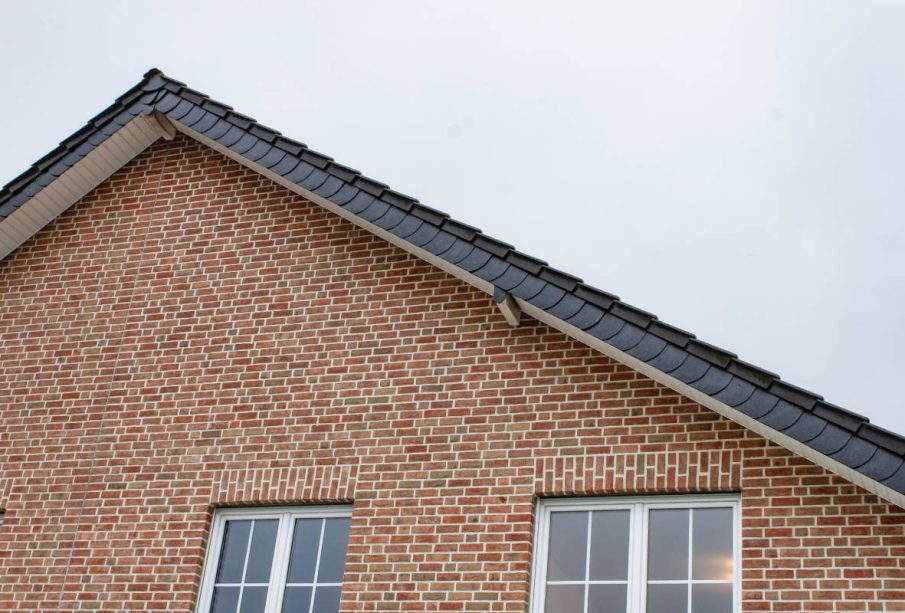Is it a good idea to paint a brick house? What kind of paint do you use on a brick house? Can you paint directly over brick?

Deciding to paint a brick house is a big step, offering a chance to refresh your home’s look. Whether it’s about updating the style or adding a layer of protection, painting a brick house brings exciting possibilities.
In this article, we’ll look at the advantages and drawbacks, the best types of paint, and the process of painting directly over brick. These insights aim to help you make informed choices for a successful home transformation.
Is it a good idea to paint a brick house?
When it comes to home improvement, the question of whether to paint a brick house often arises. While the classic charm of exposed brick is undeniable, a fresh coat of paint can transform the look and feel of your home. Let’s delve into the pros and cons of painting a brick house to help you make an informed decision.
Pros:
- Aesthetic Transformation: Painting a brick house provides a vast array of colour options, allowing homeowners to customize their home’s appearance. This transformation can breathe new life into an outdated or monotonous exterior.
- Protection from Elements: Paint acts as a protective barrier against weather elements such as rain, snow, and UV rays. This can prevent erosion and decay, extending the lifespan of your brickwork and reducing maintenance costs.
- Concealing Flaws: If your brickwork has imperfections or stains that are hard to remove, painting can serve as an effective camouflage, giving your home a cleaner and more polished look.
- Increased Resale Value: A well-executed paint job can enhance curb appeal, potentially increasing the resale value of your home. A fresh, modern appearance may attract more potential buyers.

Cons:
- Permanent Decision: Once you paint brick, it’s challenging to revert to its original state. The porous nature of bricks absorbs paint, making removal a complex and often costly process.
- Maintenance Requirements: While paint protects against some elements, it requires periodic maintenance. Over time, weather conditions and wear may cause the paint to chip or peel, necessitating touch-ups.
- Moisture Trapping: Brick is a breathable material that allows moisture to evaporate. Painting can trap moisture within the bricks, potentially leading to issues like mould and mildew if not addressed properly.
- Loss of Texture: The natural texture of brick adds character to a home. Painting over it can result in a loss of this texture, impacting the tactile and visual appeal that many homeowners appreciate.
Considerations:
- Climate: Assess the climate in your region. In humid areas, moisture-related issues may be more prevalent, making careful consideration of the potential drawbacks crucial.
- Architectural Style: The architectural style of your home plays a significant role. While some homes benefit from a painted exterior, others may lose their unique charm when painted over.
- Budget: Painting a brick house involves costs for materials, labour, and potential future maintenance. Consider your budget and weigh it against the desired aesthetic outcome.
In the debate of whether to paint a brick house, the decision ultimately rests on personal preferences, budget constraints, and the willingness to commit to long-term maintenance. But from the expert? They’d say go for it. It will keep the brick polished, giving off a fresher look for your home.
What kind of paint do you use on a brick house?
**1. Masonry Paint: Masonry paint is specially formulated for porous surfaces like brick. It adheres well to the rough texture of bricks and provides durability against the elements. Look for an acrylic masonry paint for its flexibility, breathability, and resistance to cracking.
**2. Latex Paint: Latex or acrylic latex paint is another excellent choice for painting brick exteriors. It’s known for its flexibility, quick drying time, and resistance to fading. This type of paint allows moisture to evaporate from the bricks, preventing potential issues like mould and mildew.
**3. Elastomeric Paint: Elastomeric paint is highly flexible and elastic, making it suitable for climates with extreme temperature variations. It can expand and contract with the brick, preventing cracks and ensuring long-lasting protection. Elastomeric paints are also effective at repelling water, enhancing the brick’s resilience.
**4. Breathable Silicate Paint: Breathable silicate paint is a mineral-based option that bonds chemically with the brick surface. It allows the bricks to “breathe,” ensuring moisture doesn’t get trapped within. Silicate paints are renowned for their longevity and resistance to fading, providing a lasting finish.

Considerations
- Colour and Finish: Choose a colour that complements your home’s style and surroundings. Popular choices include neutral tones, earthy hues, or classic whites. Opt for a matte or satin finish for a timeless look, while gloss finishes can add a touch of sophistication.
- Preparation is Key: Before applying any paint, ensure the brick surface is clean and free from dirt, mildew, or loose mortar. Consider using a pressure washer or a stiff brush to prepare the surface adequately.
- Test Samples: To avoid any surprises, test a small section with your chosen paint before committing to the entire project. This allows you to assess the colour and finish in the actual environment.
- Professional Advice: If you’re unsure about the best paint for your specific brick type or the application process, seek advice from paint professionals or contractors. They can provide valuable insights based on your unique situation.
Can you paint directly over brick?
The answer is, yes and no, you can paint directly over brick! However, there are a few important steps and considerations to ensure a successful and lasting paint job.
**1. Surface Preparation: The key to a successful paint job is proper preparation. Start by thoroughly cleaning the brick surface. Use a stiff brush, a mild detergent, and water to remove dirt, dust, and any loose mortar. If there are stubborn stains, consider using a brick cleaner for a more intensive cleaning.
**2. Repairing and Patching: Inspect the brick for any cracks or holes. Fill these imperfections with a high-quality exterior patching compound. Allow it to dry completely before moving forward. This step ensures a smooth and even surface for the paint.
**3. Priming the Surface: Applying a primer is crucial when painting over brick. Use a high-quality, exterior-grade primer designed for masonry surfaces. The primer helps the paint adhere better, promotes even colour distribution, and enhances the durability of the finish.
**4. Choosing the Right Paint: Select a paint specifically formulated for masonry surfaces. Masonry paints, latex, or elastomeric paints work well for brick. These paints are designed to withstand the porous nature of brick and provide long-lasting protection against the elements.
**5. Painting Techniques: When it comes to painting, a good quality brush or a sprayer is ideal for brick surfaces. Ensure you reach all the nooks and crannies. Start with a thin coat, allowing it to dry completely before applying additional coats. This step-by-step approach ensures an even and professional finish.

Considerations
- Brick Texture: The texture of the brick plays a role in the final appearance. If you want to retain the texture, opt for a thinner paint or dilute the paint slightly. For a smoother finish, apply additional coats as needed.
- Colour Choice: Choose a colour that complements your home’s style and surroundings. Lighter colours may require additional coats, while darker colours can sometimes be covered in fewer coats.
- Ventilation: Ensure proper ventilation during and after the painting process. This helps in the drying process and minimizes the impact of paint fumes.
- Long-Term Maintenance: Keep in mind that painted brick requires maintenance over time. Regularly inspect for chipping or peeling and address any issues promptly to maintain the integrity of the painted surface.
Conclusion
Latest Posts

Bitcoin News
-
The Top 10 Most Dangerous Animals in Australia
November 18, 2025












